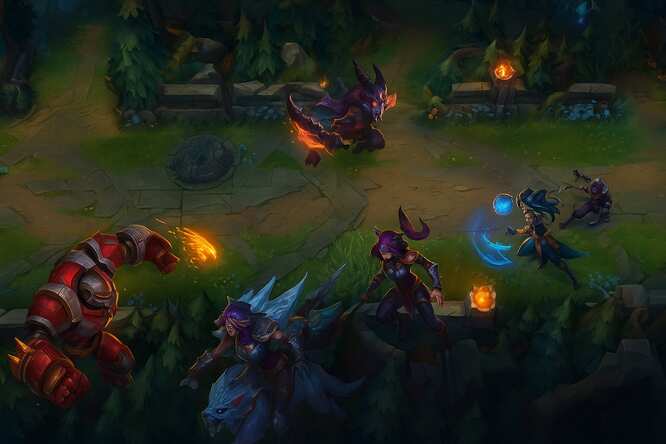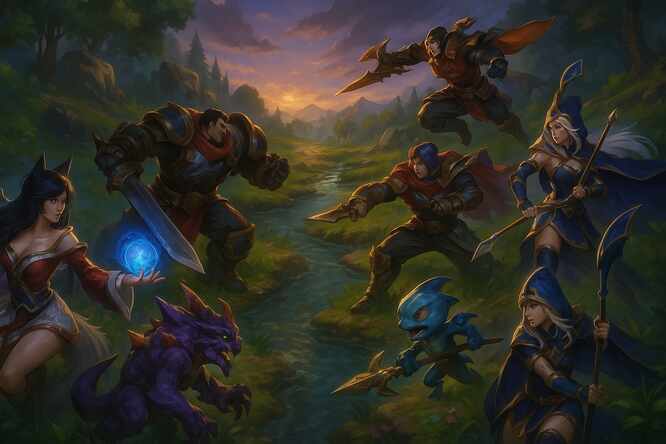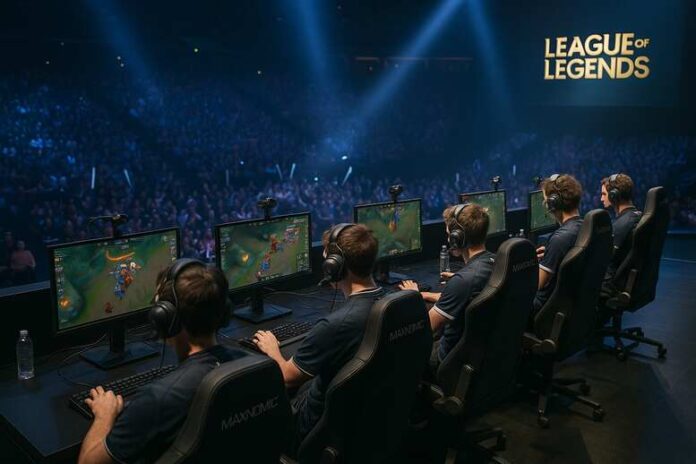Intro
League of Legends may appear chaotic at first glance. Newcomers see flashing spells, sudden fights, and health bars disappearing in an instant. To the untrained eye, it looks like sheer reflex and speed decide the outcome. Yet beneath that surface lies a deeper truth: strategy is what shapes victory. Every move, from placing a single ward to deciding when to rotate across the map, carries weight. What separates seasoned players from beginners isn’t just mechanical skill but an understanding of the game’s hidden layers.
League is a blend of chess and poker wrapped inside a video game. Decisions carry consequences far beyond the moment they are made. A skilled player knows how to turn a small lead into an unstoppable advantage, while an inexperienced one may throw away a winning position through poor judgement. This constant interplay between strategy and execution is what has made League one of the most enduring esports in the world.
The Subtleties of Laning and Map Control
The laning phase is often described as the foundation of the game. While casual players may treat it as simple minion farming, competitive players know it is where battles are truly won or lost. A well-timed freeze can deny an opponent valuable gold and experience, while a perfectly timed push can set up a dive with your jungler. These small adjustments dictate tempo and momentum in ways that aren’t always obvious.
Professional players pay obsessive attention to wave management. Freezing the lane outside your turret forces opponents to overextend, opening them up for ganks. Slow pushing a wave before roaming allows your minions to chip away at a turret while you create pressure elsewhere. These tactics are not flashy, but they quietly create opportunities that add up over time.
Vision control is another invisible but vital part of the game. Placing wards is rarely celebrated, yet it prevents ambushes, tracks enemy rotations, and allows safer objective control. Denying vision with sweepers creates fear, forcing the enemy into risky face-checks. As many analysts have said, League is often won by the team that “sees more.” Matches at the highest level demonstrate this again and again — not with highlight-reel plays, but with smart vision that sets them up.
Macro strategy ties all of this together. Knowing when to trade a turret for a dragon or when to ignore Baron to push for an inhibitor is what separates sharp minds from casual instincts. Fans often cheer for the pentakill, but coaches know it’s the quiet, calculated trades that turn into series victories.
Risk and Reward in Every Decision
Every League match hinges on decisions that balance risk and reward. Do you dive the enemy under their tower, knowing a mistimed ability could cost you everything? Do you contest a dragon while the enemy jungler lurks nearby? These choices are the heartbeat of the game.
The risk–reward dynamic is not unique to the Rift. Entire industries are built on the same principle: measured risk can bring significant reward. Just as League players weigh whether sacrificing a turret is worth securing Baron, others explore digital spaces where strategy and chance collide. Platforms such as anjouancasinos.de/ reflect this mindset, pairing calculated decision-making with the possibility of reward. The similarity is striking — in both environments, players must judge whether the risk they take is worth the potential payoff.
These decisions highlight why League never grows stale. No two matches are the same because every game offers a different set of risks to consider. Even the strongest mechanical players cannot win without understanding when to push their luck and when to retreat. Great teams don’t just take risks — they take the right ones at the right time.

The Psychological Game
While mechanics and tactics matter, League is just as much a battle of minds. Psychological warfare plays out in subtle ways across the Rift. A single unexpected teleport can force opponents into defensive play for minutes at a time. A successful early gank may tilt a rival laner into frustration, leading them to make rash mistakes.
Professional teams study their opponents as closely as the game itself. They look for tendencies, like a jungler who always camps bot lane after clearing top, or a support who habitually wards the same bush. With this knowledge, they set traps, forcing opponents into predictable patterns. Matches at Worlds are often decided not by raw mechanics, but by exploiting these mental habits.
Even in solo queue, psychology is powerful. A player on tilt after losing early may lash out in chat or overcommit to risky fights. Experienced opponents exploit this by keeping up pressure, knowing frustration will cloud judgment. Understanding the human element is part of mastering the hidden strategies of League.
Adaptability as the Ultimate Weapon
If there is one constant in League of Legends, it’s change. Patches, new champions, and shifting metas ensure that strategies never stay relevant for long. Adaptability is the skill that allows players to stay ahead of the curve.
Draft phase is a prime example. At the professional level, games are shaped before the first minion spawns. Teams carefully consider counterpicks, composition balance, and win conditions. Should they draft for late-game scaling or early aggression? Should they prioritise comfort picks or counters? These are strategic choices that ripple through every minute of play.
In everyday games, adaptability appears in smaller ways. A top laner who falls behind may need to abandon the dream of carrying and instead focus on split-pushing or peeling for the team. A jungler might shift from ganking a losing lane to pressuring neutral objectives. The ability to recognise when a plan has failed and quickly switch to another is what keeps teams alive in difficult matches.
The best players are not rigid. They read the map, the enemy team’s intentions, and their own win conditions, then adjust accordingly. This flexibility is a hallmark of greatness.

Why Strategy Outshines Pure Mechanics
Mechanics win duels, but strategy wins wars. Time and again, professional matches show that a team with average mechanics but superior strategy can topple mechanically gifted rivals. Vision dominance, map rotations, and coordinated objective play often carry more weight than a single highlight reel outplay.
For casual players, this is an encouraging truth. Improvement doesn’t always require superhuman reflexes. Watching replays, studying map awareness, and practising smarter decision-making can elevate performance dramatically. Recognising when to push a lead and when to play safe is just as valuable as mastering a champion’s combo.
The hidden strategies of League remind us that victory is built over dozens of small choices rather than one big play. The most memorable moments in the game’s history are rarely just flashy mechanics — they are the product of strategy, patience, and trust.
Closing Thoughts
League of Legends is far more than a test of speed and precision. It is a game of layers, where hidden strategies shape every move. From laning nuances to risk management, from psychological pressure to adaptability, the invisible decisions often matter most. The best players don’t just react; they anticipate, adapt, and outthink their opponents.
That’s why League continues to captivate millions worldwide. Beneath the chaos lies a game of depth, and those who understand its hidden strategies find themselves rewarded with victories that feel earned rather than lucky.
Mehr Lesen: belinda gold scheidung





